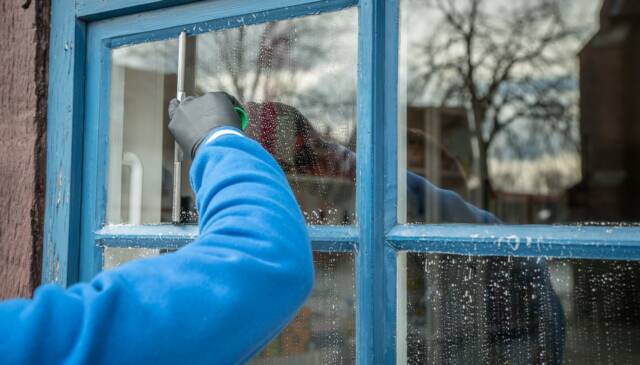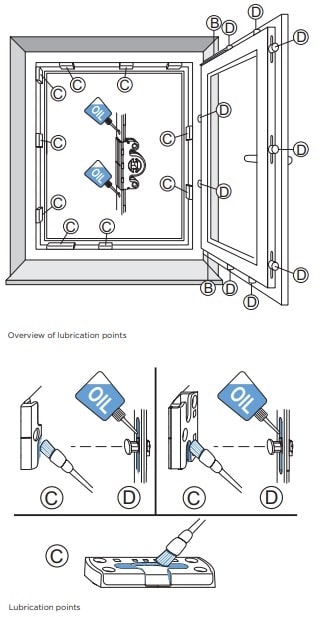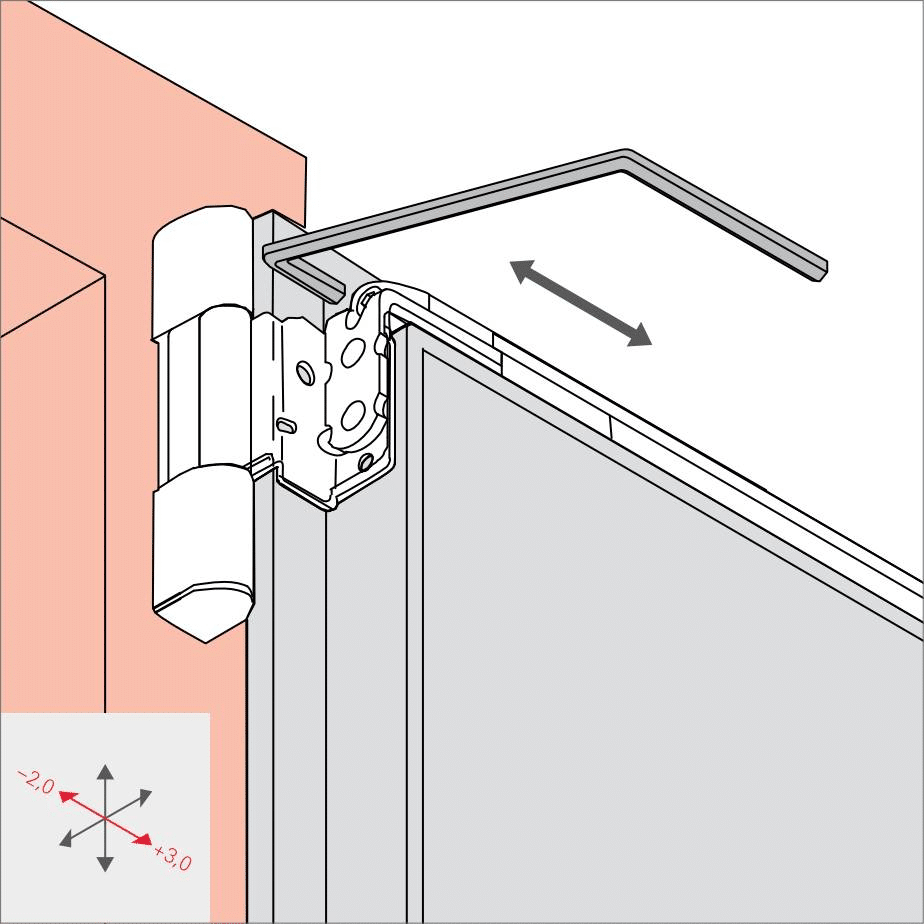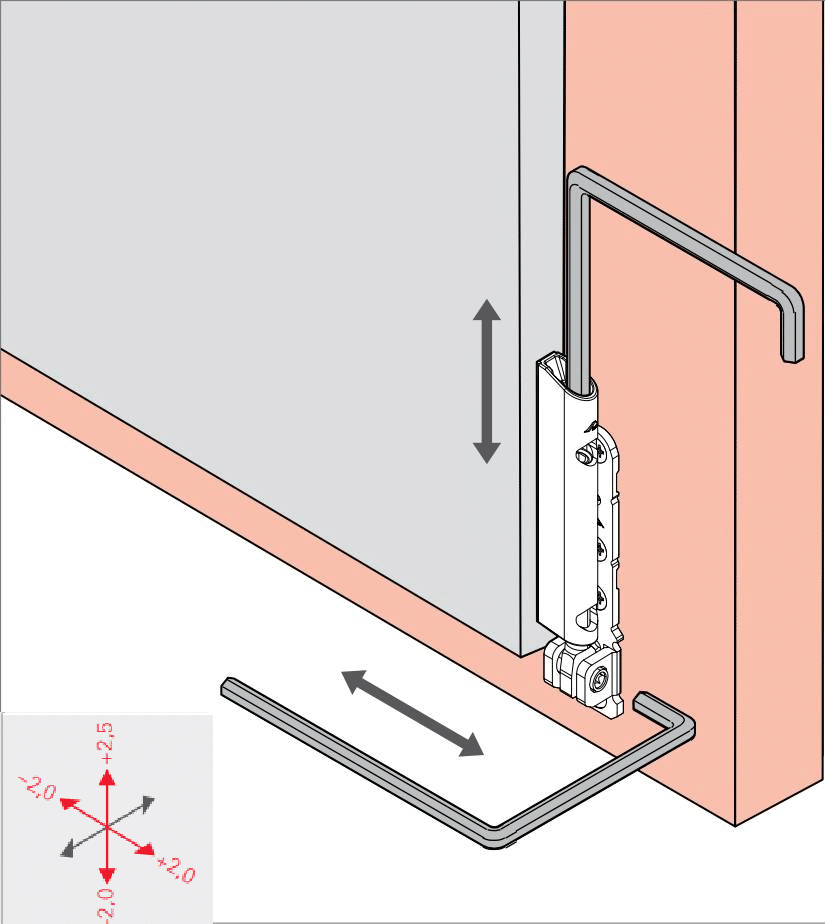
Care & maintenance

Window glass cleaning - at least twice a year
Glass is a very delicate product that can be easily damaged during the construction process. Extreme care is required when cleaning glass as scratching can occur, so never use abrasive cleaning solutions or razor blades in the maintenance process.
- For best results, do not clean glass when it is exposed to direct sunlight.
- Use a non-ammonia-based cleaner with a clean microfibre cloth. Eventually, make your cleaning solutions. Just mix four parts of water and one part of white vinegar. Pour the water and vinegar into a bowl. Next, pour the solution into a spray bottle if you wish to spray it onto the glass surface.
- Clean glass from top to bottom.
- DO NOT use a metal scraper or razor as this can damage the glass.
- Avoid pressure washing. This can damage insect screens and the silicone sealant around the perimeter of the glass.

Cleaning Window And Door Frame
The exterior surfaces of our window frames may collect a layer of surface dirt over time, depending on your local environmental conditions.
Window and door frames should be cleaned each time your windows and doors are washed to remove atmospheric dirt and grime.
- Using a mild detergent and water, clean the interior and exterior frames twice a year, or as necessary.
- DO NOT use abrasive steel wool, scrapers, scouring liquids aggressive solvents, thinners, petrol, etc. These will all damage the windows and doors and the surface finish
Cleaning once every three months should be sufficient, however, in coastal or industrial environments more frequent washing will be required
Cleaning And Lubricating Hardware
The hardware you’ve chosen for your windows and doors requires regular cleaning and maintenance to keep them working optimally.
Use a mild soap and water to wipe hardware components clean. This includes locks, hinges, operator arms, and handles. Always rinse the hardware with clean water to remove any detergent before lubricating.
After the hardware is clean and dried it must be lubricated to restore smooth operation and in some cases corrosion resistance. There are several commercially available care products which can be used.
- WD40 or CD2 – use on all sliding or rotating joints; such as rollers, pivots, brackets, hinges and chains.
- Lithium Grease – use on all gear drives; such as operators and locks. Best choice due to waterproofness.
- Light Oil – such as 3 in 1 Oil. Can be used on sliding or rotating joints. Care must be used when applying due to possible staining of wood parts.

Hardware Adjustment
Hinge lateral adjustment.

Hinge height adjustment.

Gasket compression adjustment.

Gaskets cleaning- once a year
Clean gaskets will ensure that the sash seals tightly to the frame. Using mild soap and water, thoroughly clean the gaskets with a microfiber cloth.
Threshold cleaning - as needed
Keep dirt and debris off the threshold, as this can damage the weather stripping. Sweep or vacuum excess material from the threshold as needed, and wipe clean with a wet rag.
Thresholds are rather neglected but cleaning them as a part of the normal housekeeping process can keep them looking good and save a lot of unnecessary hard work.

How To Clean Insect Screens?
Window mosquito screens are very much needed in the summertime. They let us enjoy the summer breeze without having to worry about bugs and other unwanted critters. Sadly, we often forget to clean them and they build up with grime, dirt and dust.
Luckily, we’ve got an easy way to clean your screens in just a few simple steps.
If you’re cleaning multiple screens, you’ll want to label or mark each screen so the installation process is easier later.
- Firstly, remove the screen and lay it down on a flat surface. You can also put it against a fence or wall.
- Use the garden hose on a high-pressure wet screen to remove loose dirt particles.
- Use a bucket of warm soapy water and wash screens using a very soft brush.
- Use a garden hose to rinse and allow time to dry.
You can also move the screen into your bathtub and take the same steps as described above. Enjoy your fresh window screens.


7 Ways To Help Reduce Condensation
- Try to keep the inside temperature reasonably constant.
- Avoid drying clothes indoors.
- Do not dry clothes over any radiators.
- Ensure tumble driers are properly vented or the condensate is regularly emptied.
- Keep furniture away from walls.
- Do not turn off or disable extractor fans.
- Ensure extractor fans are well maintained and offer adequate airflow.

